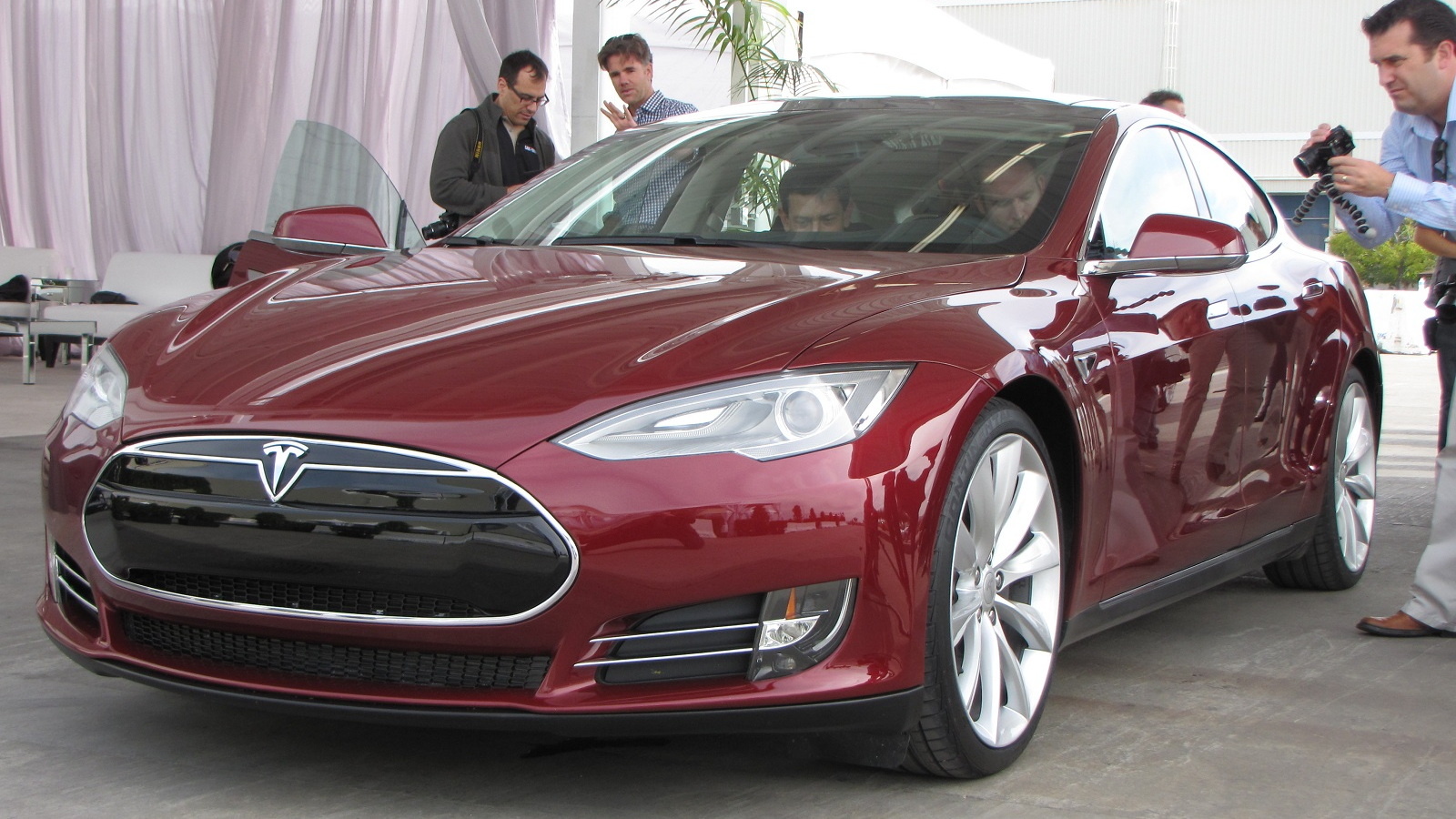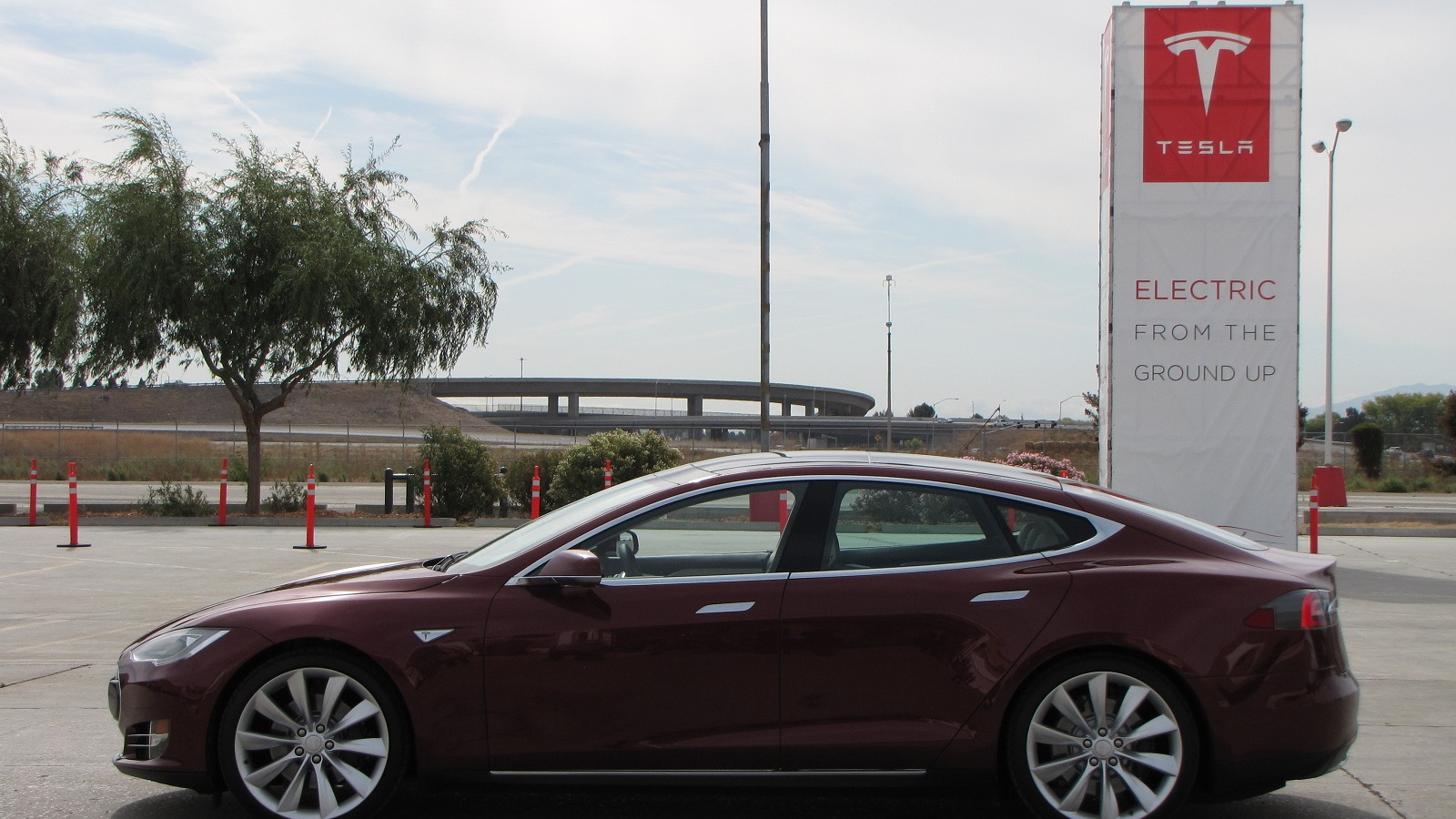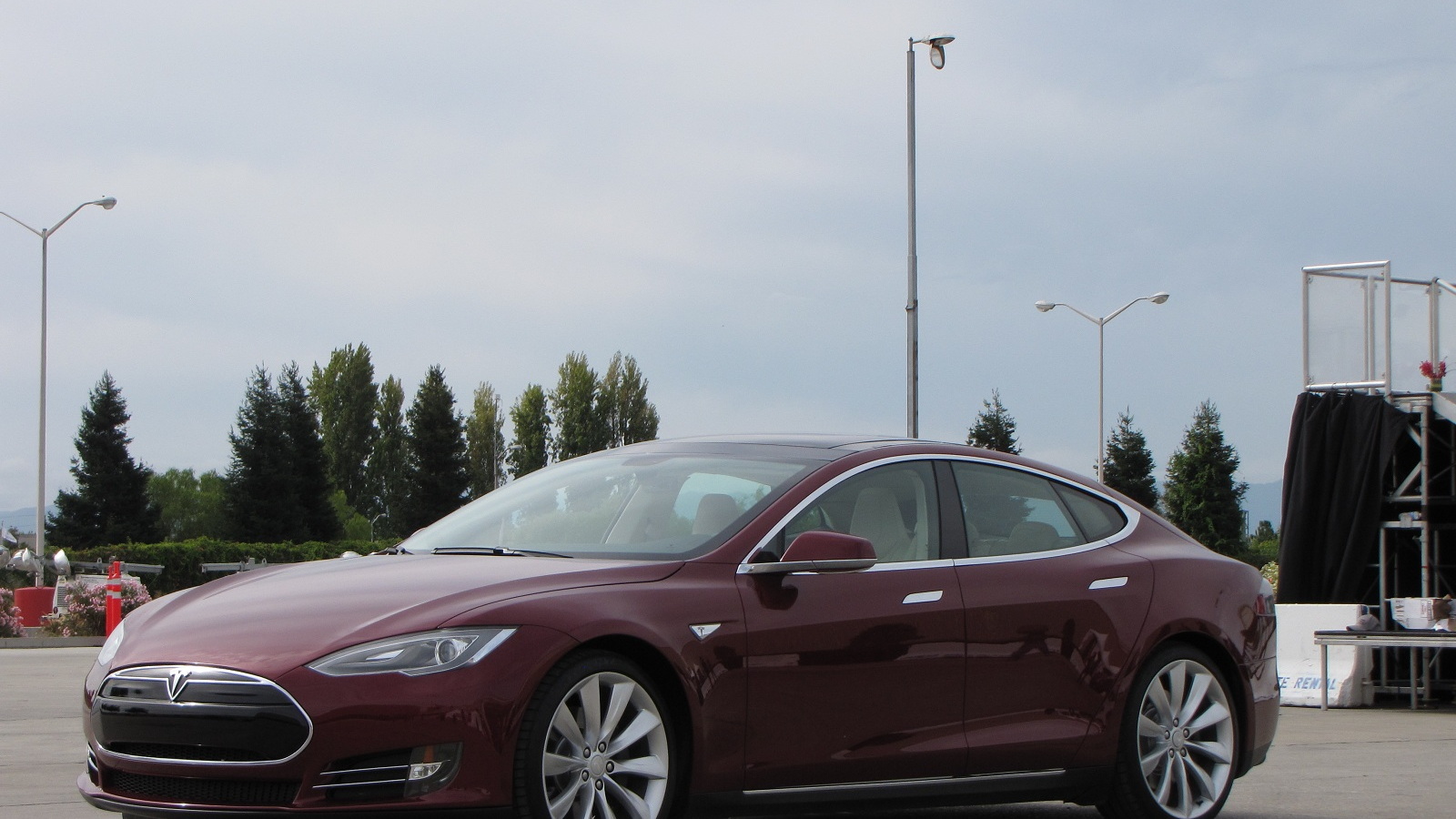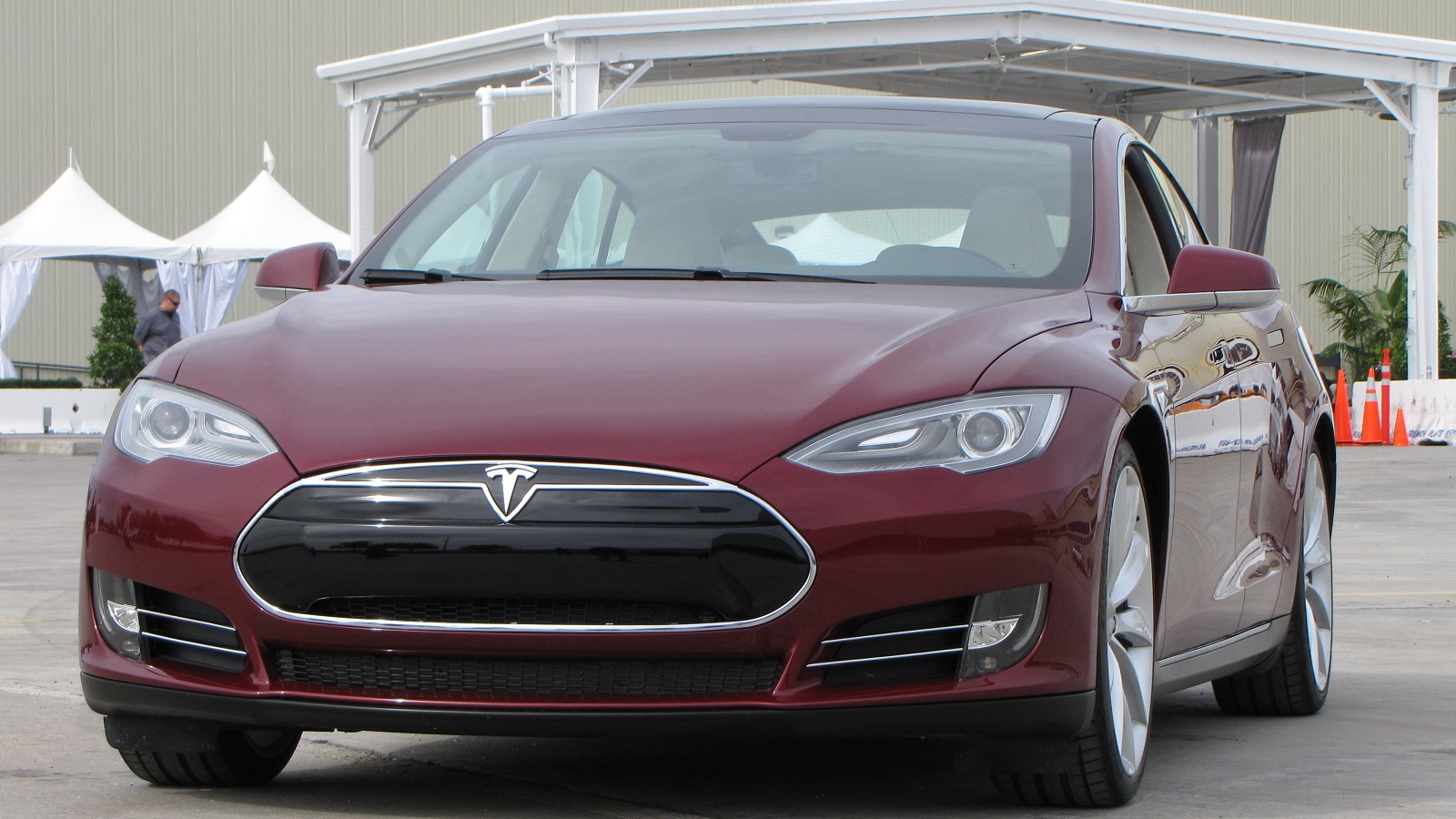They said it couldn't be done, but it looks like Tesla Motors has indeed pulled it off.
If all goes to plan, at 3:30 pm Pacific today, CEO Elon Musk and other Tesla executives will hand over the keys of a new 2012 Tesla Model S to the first retail buyer to take delivery of the all-electric luxury sport sedan.
The ceremony, which Tesla will webcast live from its Fremont, California, assembly plant, will mark the beginning of a new phase for the venture-funded startup carmaker from Silicon Valley.
Now that Tesla Motors [NSDQ:TSLA] has become a real carmaker, albeit a young one, it faces entirely new challenges:
- Can it deliver a steady stream of Model S vehicles to the backlog of what it says are more than 10,000 buyers who've put down deposits?
- Will the Model S be reliable, and if early cars have any quality issues, can the company rectify them quickly and painlessly?
- Will the mix of orders skew sufficiently to high-end models that the Tesla Model S range overall provides a healthy profit margin?
- And, can sales of the Model S--5,000 this year, 20,000 next year, says CEO Musk--generate enough revenue to cover not only its costs but future model development?
![2012 Tesla Model S display screen [Photo: Flickr user jurvetson] 2012 Tesla Model S display screen [Photo: Flickr user jurvetson]](https://images.hgmsites.net/lrg/2012-tesla-model-s-display-screen-photo-flickr-user-jurvetson_100393720_l.jpg)
2012 Tesla Model S display screen [Photo: Flickr user jurvetson]
The first Model S deliveries will all be of the high-end limited edition Signature Series, which has the largest 85-kilowatt-hour battery pack (rated by the EPA at 265 miles of range) and special trim and features to identify it as a special edition.
Technically, the first few Model S cars were delivered two weeks ago--the very first one went to Tesla board member Steve Jurvetson, who is already driving it around Silicon Valley and has blogged about its central display screens--but today's cars are the first retail deliveries.
They're still likely to go to insiders, Tesla Motors investors, and venture capitalists, including such early funders as Nancy Pfund of DBL Investors.
Early struggles
Tesla struggled to get its first car, the two-seat all-electric Roadster, on sale in the fall of 2008.

2011 Tesla Roadster Sport. Photo by Joe Nuxoll.
The young company learned a lot during that process.
It missed several deadlines, it had to recall its first few hundred cars to replace a faulty two-speed transmission, it raised the Roadster's price to $109,000 before depositors had received their cars, and of course it was caught up in the auto-industry meltdown that accompanied the global recession of 2008.
In retrospect, Tesla may be glad it could cut its teeth on a low-volume specialty car before going into mass production of higher-volume sedans.
The other highly publicized venture-funded plug-in startup carmaker, Fisker Automotive, took a different and riskier path, launching directly into volume assembly of its very first car, the 2012 Fisker Karma.
That vehicle has encountered similar delays and quality issues to those Tesla had with its Roadster, but in a far more public fashion.
2,600 Roadsters
Adapted from the existing Lotus Elise sports car, the Tesla Roadster was larger, differently styled, and much heavier than its Lotus sibling, due to the 900-pound battery pack sitting behind the occupants where the Elise's engine would have been.
That pack was made up of 6,831 individual "commodity" lithium-ion batteries similar to those used in mobile phones and laptop computers.
But the Roadster made converts out of many disbelievers owing to the sheer acceleration delivered by that battery to an electric motor with peak power of 185 kilowatts (248 horsepower) driving the rear wheels.
A 0-to-60-mph time of 3.9 seconds took modern electric cars out of the "golf cart" category forever. It even led members of the grumpy middle-aged automotive press to acknowledge the potential of electric performance cars.
Only 2,600 Tesla Roadsters were built, with the rolling bodies assembled by Lotus in England and then shipped to California.
The battery pack, power electronics, and traction motor were added in a large service bay behind Tesla's Menlo Park dealership, one of the more unlikely final assembly locations in the industry.
Now what?
While Tesla employees, owners, supporters, and customers enjoy today's ceremonies--view the webcast here starting at 3:30 pm Pacific today--the company is likely to enter a period of growth unlike anything it's seen so far.
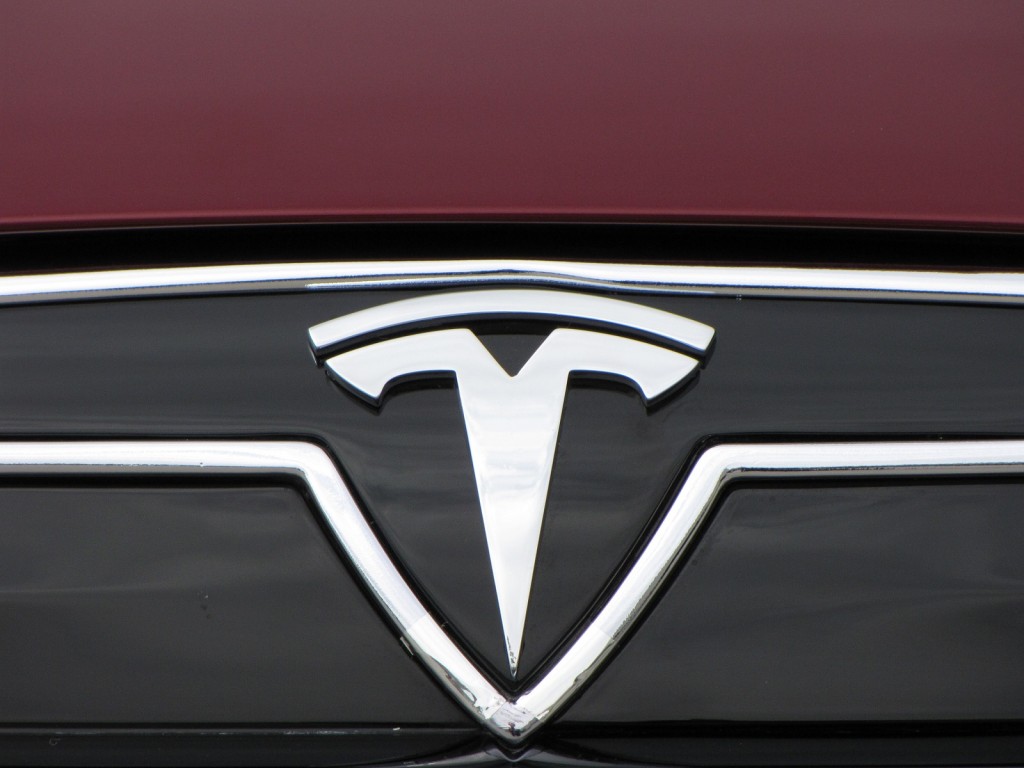
2012 Tesla Model S beta vehicle, Fremont, CA, October 2011
Expanding its network of Tesla Stores, making its target customers aware of the car, and supporting a vastly larger pool of owners and cars than it's had to deal with before, all of these challenges hold potential pitfalls for the company.
Most analysts continue to believe that Tesla Motors won't remain independent, but will be purchased by one of the dozen or so largest global automakers.
The best time for a sale may be in the two years starting today, assuming that Tesla launches the Model S smoothly, racks up sales according to plan, and rolls out its 2013 Model X crossover on schedule.
But meanwhile, it's probably appropriate for our fans and readers to congratulate the company on its achievements.
Assuming the new owners of those 2012 Tesla Model S Signature Series cars drive them smoothly out of the factory and 250 miles or more beyond, one of the world's more unlikely carmakers will have entered a new phase of its life.
Many observers, analysts, and armchair critics said the company would never get this far.
So, let us toast Tesla today--and watch to see how this next phase of the electric-car company's life plays out.
Well done, Tesla!
+++++++++++
